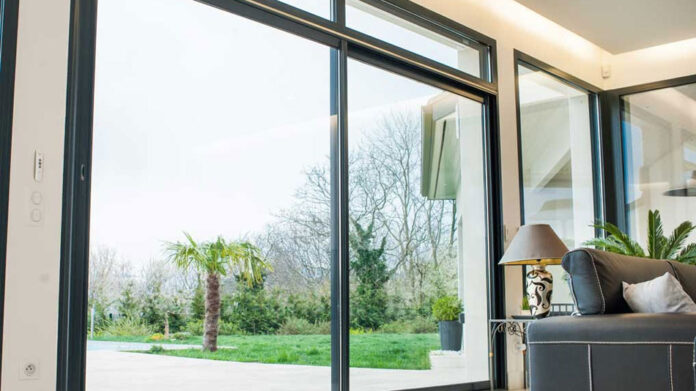Table of Contents
The modern world is increasingly recognizing the importance of natural light in interior spaces. An essential tool in achieving this is the use of glass partition walls. These structures, while providing a sense of openness and fluidity, also allow for the maximization of daylight. This article delves into the magic of glass partitions, their impact on workplace well-being, their role in sustainable design, and how they inspire creativity with abundant natural light.
Harnessing Sunlight: The Magic of Glass Partitions
Glass partition walls have become a popular choice in both residential and commercial interiors. Their appeal lies not only in their aesthetic value but also in their ability to enhance the quality of indoor environments by harnessing natural sunlight.
The magic of glass partitions lies in their transparency. They allow natural light to permeate through spaces, reducing the need for artificial lighting and creating a sense of openness. This can dramatically transform an otherwise dark and enclosed room into a bright and inviting space. The influx of sunlight also has numerous health benefits, including improving mood, boosting productivity, and contributing to a general sense of well-being.
Moreover, glass partitions can be customized to fit specific needs and preferences. They can be frosted or tinted, or feature intricate designs, to add an extra layer of privacy or aesthetic appeal. Regardless of the design, they maintain their primary function—allowing the flow of natural light.
A Brighter Perspective: Improving Workplace Well-being with Natural Light
The impact of glass partition walls on workplace well-being cannot be underestimated. Numerous studies have shown the positive effects of natural light on employee health and productivity. By allowing an abundance of sunlight into workspaces, glass partitions can significantly contribute to creating a healthier and more efficient work environment.
Natural light has been found to reduce the risk of eyestrain and headaches, common ailments among office workers who spend long hours in front of a computer screen. It also regulates the body’s circadian rhythm, promoting better sleep and, consequently, better overall health. Moreover, exposure to sunlight increases the body’s production of vitamin D, which is essential for bone health and has been linked to improved mood and cognitive function.
Aside from the physical benefits, natural light also has a positive impact on mental health. It can reduce stress, boost mood, and foster a sense of happiness and satisfaction. This not only enhances employee well-being but also promotes a positive and productive work culture. By installing glass partitions, employers can provide their employees with a workspace that is both aesthetically pleasing and beneficial to their health.
Sustainable Design: Energy Efficiency and Glass Partitions
The use of glass partition walls is not only beneficial to occupants but also contributes to the sustainability of buildings. By maximizing natural light, these structures can significantly reduce the need for artificial lighting, leading to energy savings and a lower carbon footprint.
Energy efficiency is a key consideration in sustainable design. Traditional walls, while providing privacy and soundproofing, often necessitate the use of artificial lighting even during the day. Glass partitions, on the other hand, allow daylight to penetrate deep into the building, reducing the need for electric lights and contributing to energy conservation.
Moreover, by allowing the flow of natural light, glass partitions can help regulate indoor temperatures. During the colder months, sunlight streaming through the glass can provide a degree of warmth, reducing the need for heating. Conversely, in the summer, the use of tinted or reflective glass can help keep interiors cool by blocking out excessive heat.
Smart Light Management: Controlling Glare and Heat in Glass-Adorned Spaces
While the benefits of glass partition walls are manifold. They can also present challenges in terms of glare and heat control. However, with smart light management strategies, these issues can be effectively addressed.
Controlling glare is crucial in maintaining a comfortable and productive work environment. Excessive glare can cause eyestrain and discomfort, potentially affecting productivity. Solutions such as blinds, shades, or curtains can be used to mitigate glare. Alternatively, glass partitions can be treated with anti-glare coatings or films to diffuse sunlight and reduce glare.
Heat control is another critical aspect. While sunlight can provide warmth, too much of it can lead to overheating, especially in spaces with large glass surfaces. However, the use of heat-reflective or low-emissivity glass can help in maintaining a comfortable indoor temperature. Heat-reflective glass has a metallic coating that reflects a significant portion of the sun’s heat, keeping interiors cool. Low-emissivity glass, on the other hand, has a thin coating that reflects heat back to its source, helping to keep interiors warm in winter and cool in summer.
Illuminating Interiors: Inspiring Creativity with Abundant Natural Light
Glass partition walls, by maximizing natural light, can inspire creativity and innovation. A well-lit environment is not only conducive to productivity but also fosters a sense of freedom and openness, stimulating creative thinking.
The importance of natural light in promoting creativity is well-documented. Studies have shown that exposure to natural light improves mood and energy, both of which are essential for creative thinking. Moreover, the changing patterns of daylight can provide a sense of connection with the outside world, sparking inspiration and creativity.
Furthermore, the aesthetic appeal of glass partitions can contribute to creating an inspiring environment. The interplay of light and shadow, the transparency and reflections, all add to the visual interest of the space. This, in turn, can stimulate the senses and foster creative thinking.
In conclusion, glass partition walls, while being aesthetically pleasing, play a crucial role in maximizing natural light, enhancing workplace well-being, promoting sustainable design, and inspiring creativity. They represent a smart and sustainable choice for modern interiors, combining functionality with beauty and wellness. By harnessing the power of sunlight, they not only contribute to the health and productivity of occupants but also to the sustainability of our built environment.















